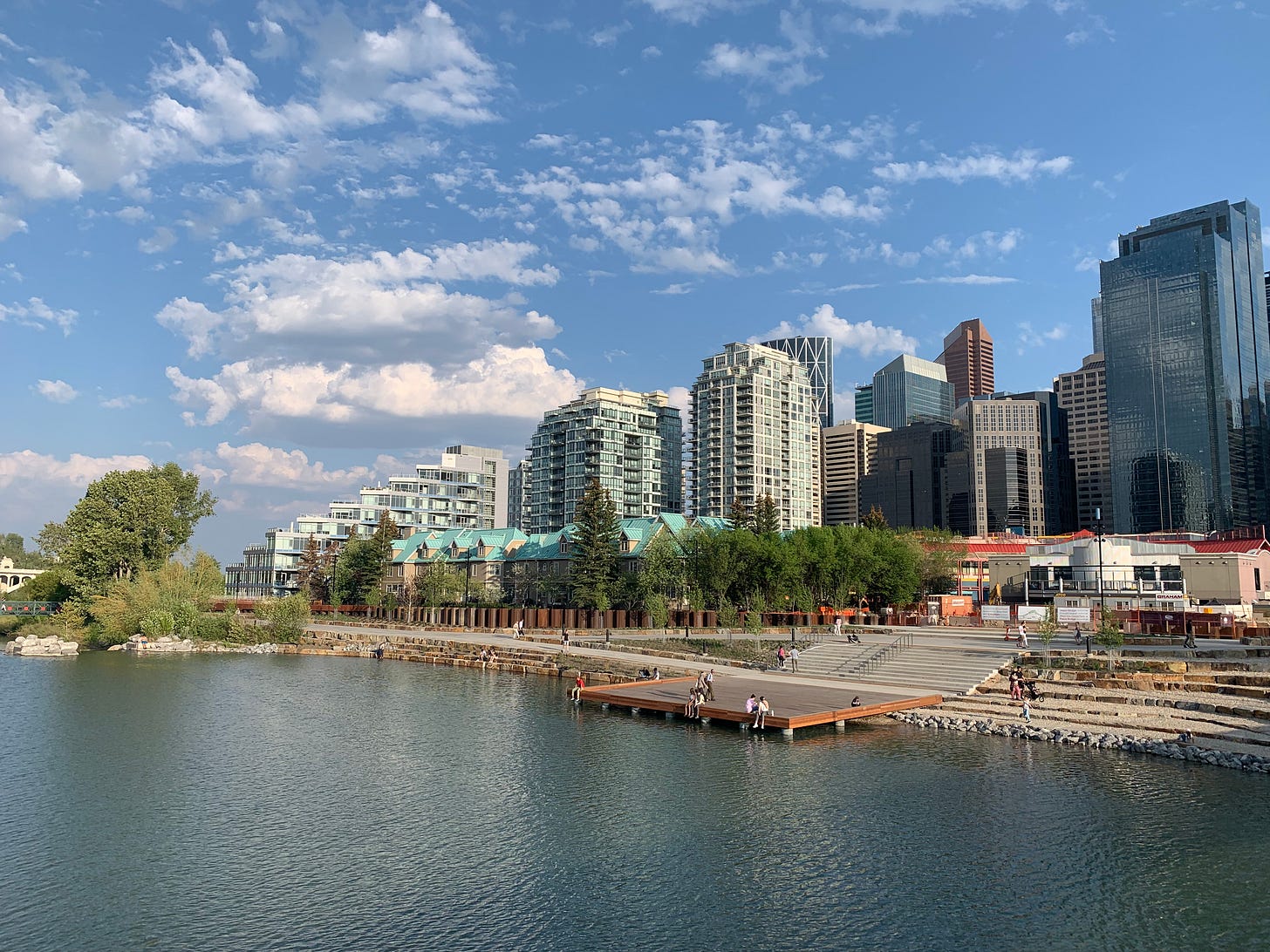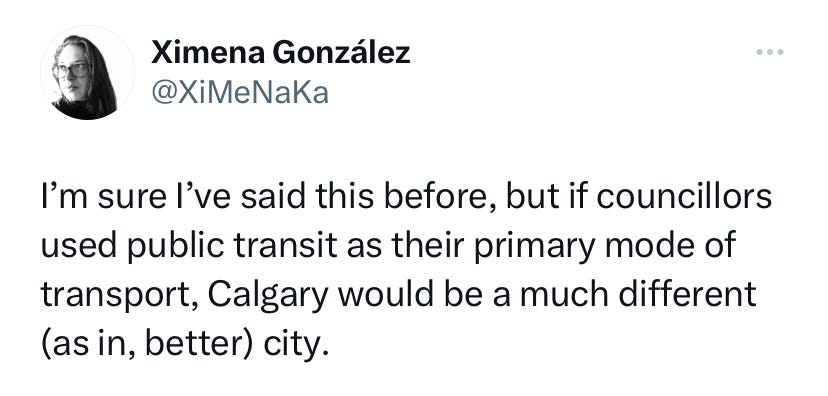In early May, I took the C-train for the first time this year. As a matter of fact, it was the first time in years i was taking the LRT to go further than a couple of stations—i don’t usually stray too far from the inner city.
Considering all the press crime on public transit gets, i must admit i was a bit apprehensive, but while some aspects of the experience have changed, most remain unchanged.
After a short bike ride, i anxiously waited for my outbound train to arrive at the Sunnyside. While the station was quiet, and i had enough to get to my physio appointment early, dark clouds in the sky threatened to turn the remainder of my trip into a soggy experience.
As the train arrived at the platform, a warning from the conductor blared from the speakers: passengers were to avoid getting onto the first car due to a fire hazard. (I assume “fire hazard” is a code word for people smoking crack.)
“Fun times!” I thought, while ensuring the car i was just stepping into was not the first one.
Once aboard, i was received by an acrid stench, which i would later identify as urine but couldn’t tell the source. To my shock, i realized i was standing on a pile of wet cardboard and Tim Hortons cups—the culprit, perhaps?
I’ll never know.

Because of my companion (a.k.a. my bike), I wasn’t able to move to a different spot. At least the car i had boarded wasn’t taking a “fire hazard” for a ride…
While this isn’t something too out of the ordinary, conditions like these used to be rare before the pandemic—unless for Stampede season.
Although 10 a.m. is hardly rush hour, ridership was high (as in, all seats were taken). Nobody seemed to mind the smell, the litter, nor the fire hazard—not that i noticed, at least.
I’m sure many of us would have preferred not to be on the CTrain that day (especially with rain looming)—but it’s not like we had a choice.
After my appointment, the trip back home was different. Without any suspicious smells, it felt like the old days of taking the LRT: filled with students and workers scrolling on their phones or talking to each other, but mostly scrolling. There was one remarkable absence, though—white commuters.
I could only identify three or four riders who were not a visible minority on the even busier car (many people standing, this time). As we got closer to the city centre, however, the racial distribution evened out.
There’s few places in Calgary where our city’s diversity is evident. One is Chinook Mall on a weekend, Prince’s Island on warm summer evening, and transit.
But do you know who’s probably the most unlikely demographic you’ll bump into on transit? Politicians. (Based on anecdotal information provided by one transit user: me.)
After the aformentioned CTrain trip, I speculated on Twitter that if more decision-makers used public transit as their primary mode of transport, the service (if not the city) would be much better.
However, I was told it’s impossible for a city councillor to do their job effectively without a car. And while as a transit user I don’t doubt it, what this also means is that a driver’s licence is basically a requirement to become a city councillor.
Since a majority of Calgarians have a driver’s licence, this doesn’t seem to be a major issue. It’s a small share of our city’s population relegated to doing certain jobs, or taking on certain volunteering activities at limited times of the day.
It’s only a few of us who can’t participate in society in the same ways most Calgarians do.
Diversity, equity and inclusion initiatives are often focused on becoming more understanding, more tolerant of others. On making accommodations for those who, like me, speak English as a second language, as if it were some sort of disability or health condition. (Framing accessibility as an accommodation is not okay, btw.)
Yet the barriers an inefficient transit system places upon us remain invisible.
On Wednesday, Calgary Transit’s updated plan was approved by city council’s infrastructure and planning committee. This document plans to expand service to 15 hours per day, and decrease wait times in the Primary Transit Network. Though we’ll probably have to walk a bit longer to reach a bus stop. Can’t have everything, eh?
As i write this, i received an email about the availability of a source i need to interview for a story. If i drove, i could make it work—but because i have to leave my house two hours prior to my appointment, my options are limited: I can either Ask my editor for a deadline extension. Pay for a cab that would cost about a quarter of the amount i’ll get paid to write that specific piece—and ask them to drive fast. Or reschedule an appointment i’ve been waiting four months for.
Decisions, decisions…
Reluctantly yours,
Ximena





I started taking the C-train daily this year again after a long absence working downtown (almost 10 years). It was jarring to see much more evidence of the unraveling of the social fabric in the city: drug use, untreated mental illness and poverty. You’re absolutely right about politicians needing to take transit and I have thought in the past about some of them at least taking a one month ‘challenge’ of solely using transit to commute.
PS: I initially read ‘fire hazard’ as ‘fire lizard’ lol.